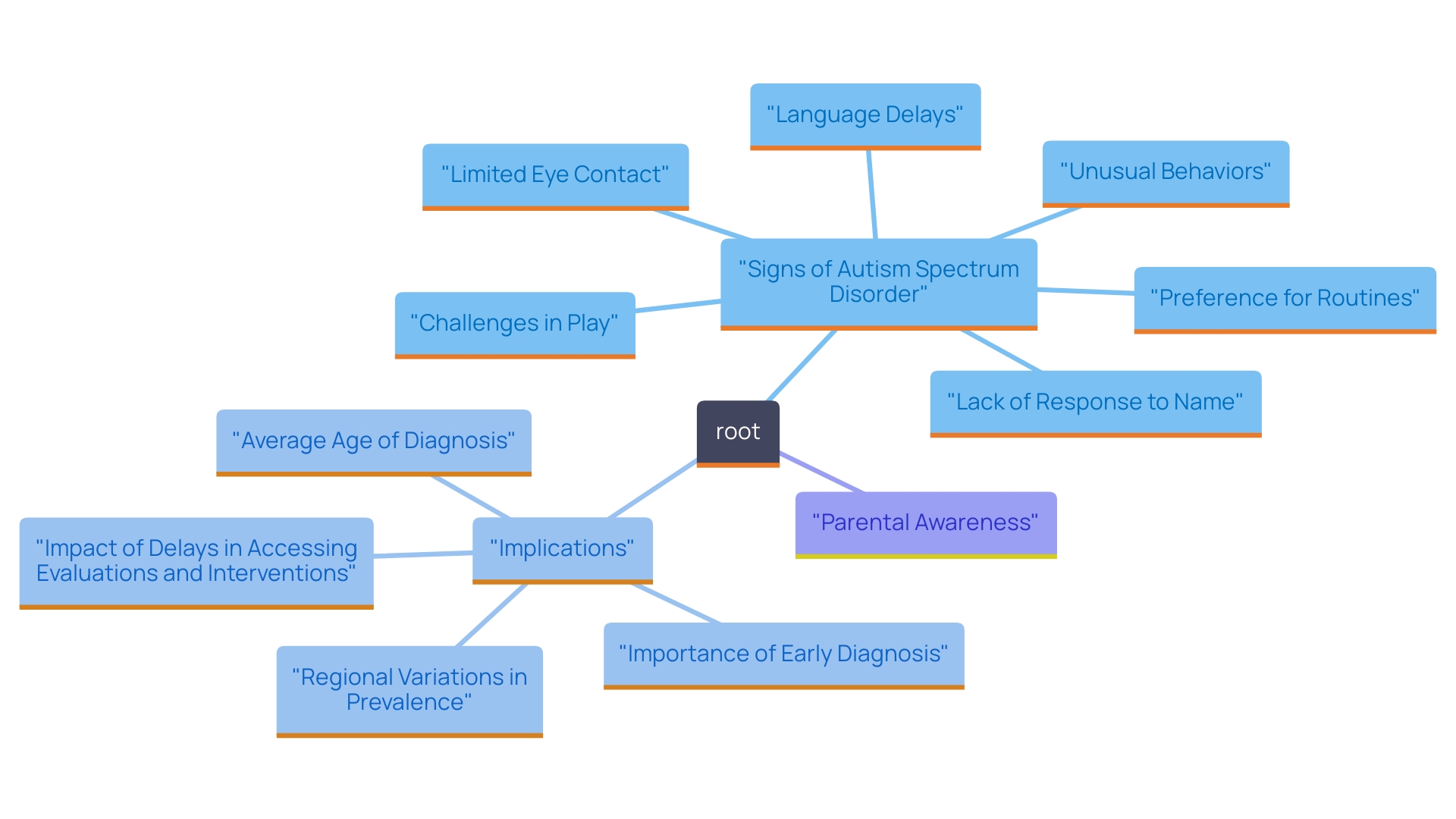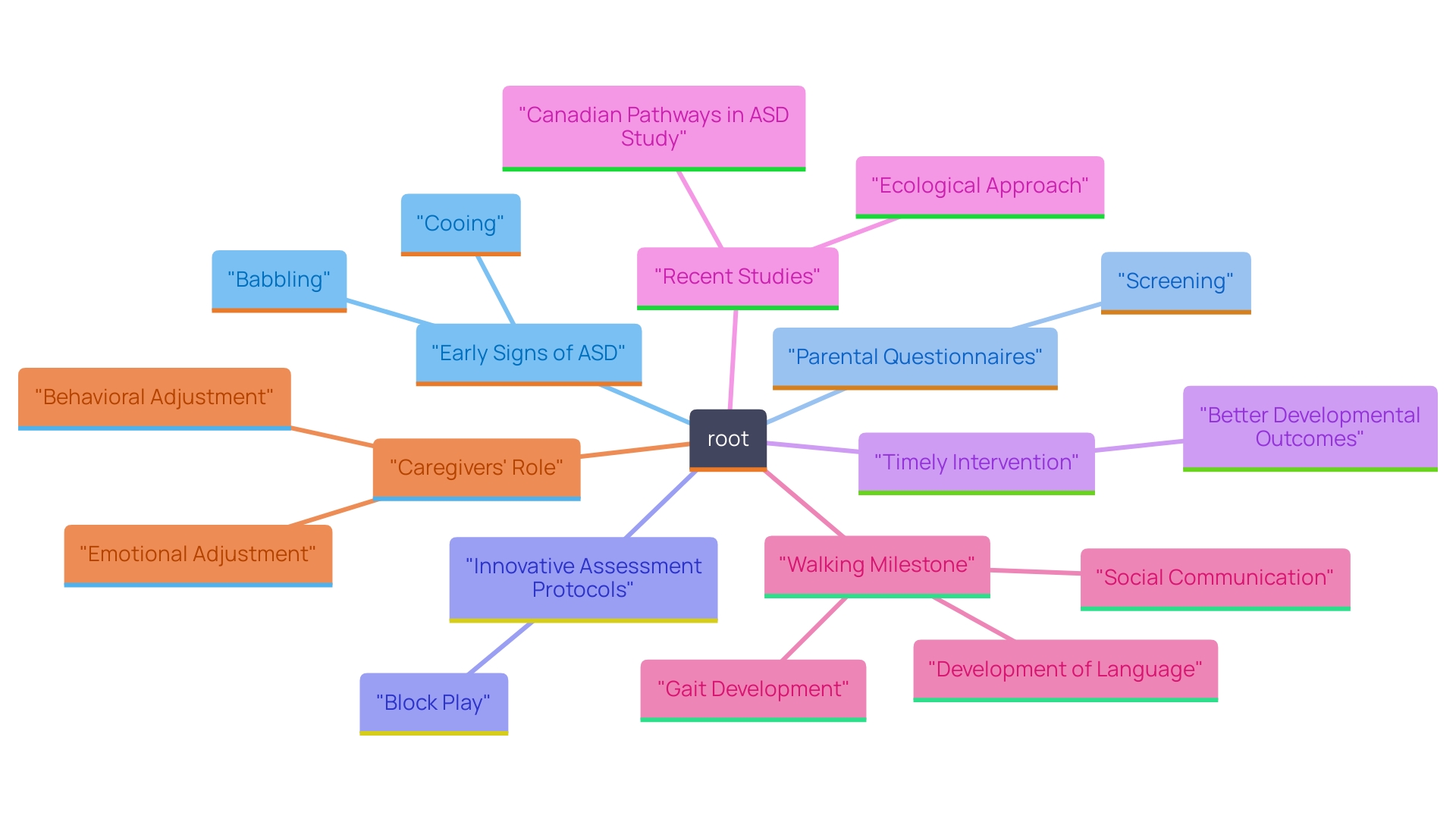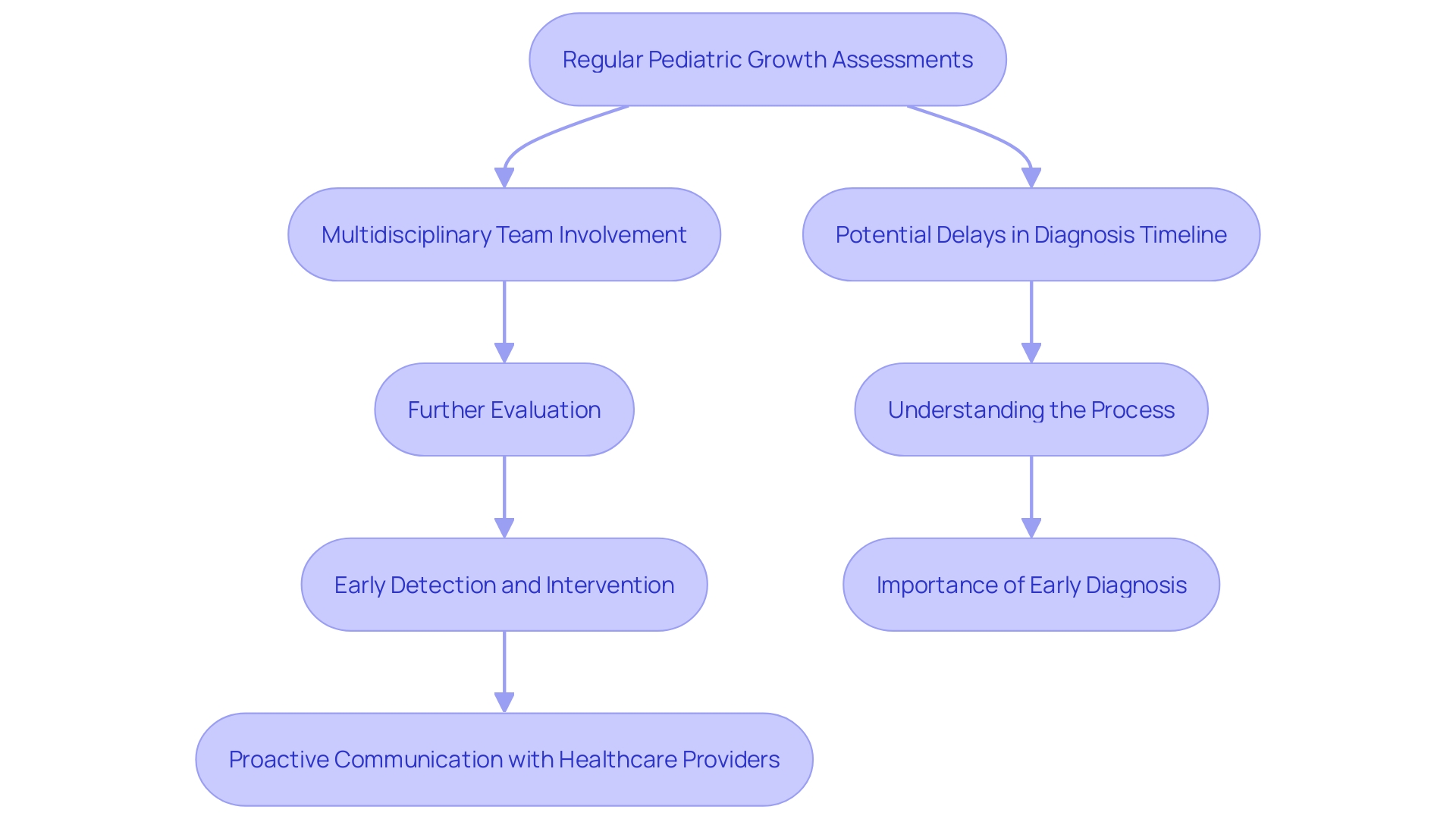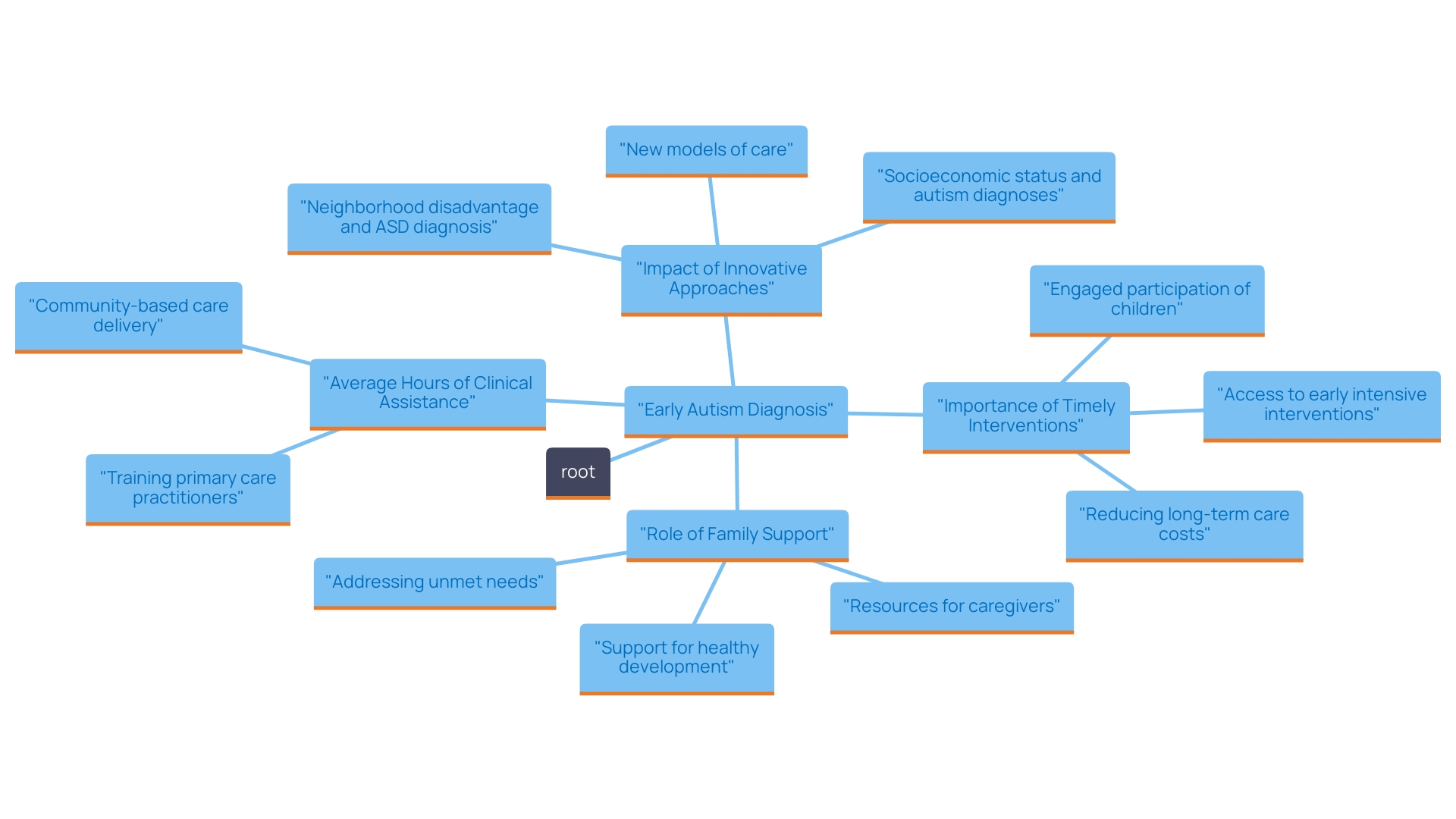Introduction
Navigating the journey of autism spectrum disorder (ASD) can be daunting for parents, but understanding the early signs and the importance of timely intervention can empower families to make informed decisions. Early identification of autism is crucial, as it opens the door to interventions that can significantly enhance a child's developmental outcomes. From recognizing subtle behavioral cues to understanding the diagnostic timeline, parents play a vital role in advocating for their child's needs.
With the prevalence of ASD on the rise, it is more important than ever for caregivers to be proactive in monitoring developmental milestones and seeking professional guidance. This article delves into the early signs of autism, the critical age milestones for observation, and the importance of swift diagnosis and intervention, equipping parents with the knowledge they need to support their children effectively.
Recognizing the Early Signs of Autism
The initial indications of autism spectrum disorder (ASD) can manifest in numerous forms, frequently varying considerably from one individual to another. Recognizing these signs is critical, as early identification can lead to timely evaluation and intervention, which are vital for improving long-term developmental outcomes. Parents may observe limited eye contact, an apparent lack of response to their name, and challenges in engaging in reciprocal play, which are all common indicators of ASD. Additionally, delays in language development, unusual behaviors such as repetitive movements, and a strong preference for routines can also be notable signs.
Research indicates that about 1 in 160 youngsters globally are diagnosed with ASD, with varying rates across different regions; for instance, in the United States, that figure rises to approximately 1 in 68 youth. Alarmingly, a 2020 study revealed that 1 in 36 youngsters aged eight years were diagnosed with a developmental disorder. Despite the capability to consistently recognize autism by the age of two, the average age for diagnosis continues to exceed four years, particularly impacting youths from racial and ethnic minority backgrounds.
Moreover, delays in accessing diagnostic evaluations can extend beyond a year, often due to a shortage of specialists available to conduct assessments. Such delays can hinder timely access to intensive, evidence-based interventions at a moment when neuroplasticity—the brain's ability to adapt and change—is at its peak. By addressing these initial signs, parents can promote involvement in interventions designed to support their offspring's specific growth requirements. As emphasized by specialists, prompt diagnosis paves the way for optimal results, highlighting the significance of parental awareness and proactive involvement in their offspring's growth journey.

Age Milestones: When Signs of Autism Appear
Autism Spectrum Disorder (ASD) can often be identified as early as 18 months, with many signs potentially emerging even sooner. Important growth milestones, including cooing, babbling, and pointing, serve as critical indicators of a young one's progress. By the age of two, many young individuals displaying atypical behaviors may warrant further evaluation. Vigilance during these crucial years is essential; parents should actively monitor their offspring's development and seek professional advice when they observe any discrepancies from established developmental norms.
Recent advancements in early detection methodologies emphasize the importance of parent engagement in the assessment process. Research indicates that approximately 63.1% of autism screening tests rely on parental questionnaires, highlighting the invaluable insight parents can provide regarding their offspring's emotions and behaviors. However, there remains a gap in comprehensive assessments that simultaneously evaluate general development and specific ASD manifestations. Current tools often fall short in providing tailored development programs, as psychologists typically utilize multiple tests to diagnose each individual.
Innovative approaches, such as a parent-offspring block-play protocol, have shown promise in providing deeper insights into a young person's social and cognitive development. By observing interactions during play, researchers can identify patterns that may signify ASD. Moreover, machine learning models like AutMedAI have been developed to analyze simple parameters and predict autism in youngsters under two with impressive accuracy. This model focuses on critical predictors, such as the age of the first smile and any eating difficulties, allowing for earlier interventions that can significantly enhance the quality of life for affected families.
As a growing body of research continues to highlight the prevalence of disabilities—affecting approximately 8.5% of youth aged 3–17 in the United States—it's imperative that parents remain proactive. Early intervention can lead to enhanced communication and social skills, ultimately assisting youngsters in reaching their full potential. Parents are encouraged to consult healthcare professionals if they suspect their child may be experiencing delays in growth, as timely support can make a substantial difference in a child's progress.

Understanding the Autism Diagnosis Timeline
Identifying spectrum disorder (ASD) generally begins with growth assessments carried out during regular pediatric appointments. These screenings are essential as they help identify potential growth delays, which may not necessarily indicate autism but can be linked to various conditions, including hearing or vision issues. When concerns are raised, a more comprehensive evaluation is undertaken by a multidisciplinary team, which may include psychologists, speech-language pathologists, and other specialists. This thorough assessment process draws upon the observations of professionals and the insights provided by parents or caregivers regarding their offspring's development.
According to recent statistics, about 8.5% of youngsters aged 3 to 17 in the United States are diagnosed with some form of developmental disability, including ASD. This emphasizes the significance of early detection and intervention, as research consistently indicates that the sooner treatment starts, particularly behavioral therapy, the better the results for young individuals. However, the timeline for achieving an official diagnosis can vary significantly, often ranging from several months to over a year, which can feel daunting for families navigating this process.
Comprehending this timeline is crucial for parents, as it allows them to seek timely support and resources for their offspring. Moreover, it is essential to recognize that not every growth delay indicates autism; numerous factors can influence a young one's delays. Therefore, maintaining open communication with healthcare providers and being proactive about developmental milestones can empower parents in advocating for their offspring's needs. The dedication of groups such as the Autism Community in Action (TACA) highlights the increasing assistance for families, striving to close the gaps in current diagnostic processes and offer resources for initial intervention. By nurturing an informed and supportive atmosphere, parents can more effectively navigate the complexities of diagnosis and ensure their offspring receive the necessary assistance for their development.

Importance of Early Diagnosis and Intervention
The early diagnosis of autism is paramount, as it opens the door to timely interventions that can profoundly influence a person's developmental trajectory. Research highlights that when families receive suitable, evidence-supported clinical assistance, they are better prepared to comprehend and address their unique needs, resulting in enhanced outcomes not only for the individual but for the entire family unit. Despite New Zealand's relatively robust resources, a significant one-fifth of families with young autistic children report lacking access to any clinical support, and those who do receive assistance average only about two hours per week. This minimal support often falls short of the recommended ten hours of intervention that studies suggest is critical for fostering significant growth in communication, social skills, and overall functioning.
Parents are pivotal advocates in this journey; their awareness of the importance of early diagnosis can inspire them to seek assessments and interventions promptly. Moreover, parent-mediated approaches, which typically involve one to three hours of clinician guidance weekly over several months, have shown promise in enhancing parent-child interactions and facilitating better developmental outcomes. For example, recent findings indicate that young participants involved in lower-intensity support programs were more engaged and utilized a wider range of language during interactions with their parents compared to those receiving no support.
As the landscape of interventions for developmental disorders continues to evolve, innovative methods such as using AI to analyze photographs of individuals' retinas are being explored, offering potential insights into diagnosis and severity. Such advancements emphasize the essential need for prompt intervention, as research shows that only a small percentage of children diagnosed with developmental disorders before the age of five can live independently as adults. Therefore, fostering a culture of early identification and support can significantly mitigate the long-term risks associated with autism, including mental health challenges and educational barriers.

Conclusion
Recognizing the early signs of autism spectrum disorder (ASD) is crucial for parents seeking to support their child's development effectively. From limited eye contact to delays in language skills, understanding these indicators can lead to timely evaluations and interventions that significantly enhance long-term outcomes. It is vital for parents to be vigilant during key developmental milestones, as early detection can pave the way for evidence-based support tailored to their child's unique needs.
The timeline for autism diagnosis can often feel overwhelming, with many families experiencing delays in accessing necessary evaluations and interventions. However, maintaining open communication with healthcare professionals and actively monitoring developmental progress can empower parents to advocate effectively for their children. The importance of early diagnosis cannot be overstated; it not only facilitates access to essential resources but also fosters an informed environment that promotes positive developmental trajectories.
Ultimately, the journey of navigating autism does not have to be faced alone. By harnessing the power of early identification and intervention, parents can significantly influence their child's growth and development. With the right support and resources, families can create a nurturing environment that allows their children to thrive, highlighting the importance of proactive engagement in addressing ASD.
Taking these steps can lead to improved communication, social skills, and overall well-being, ensuring a brighter future for children on the autism spectrum.




